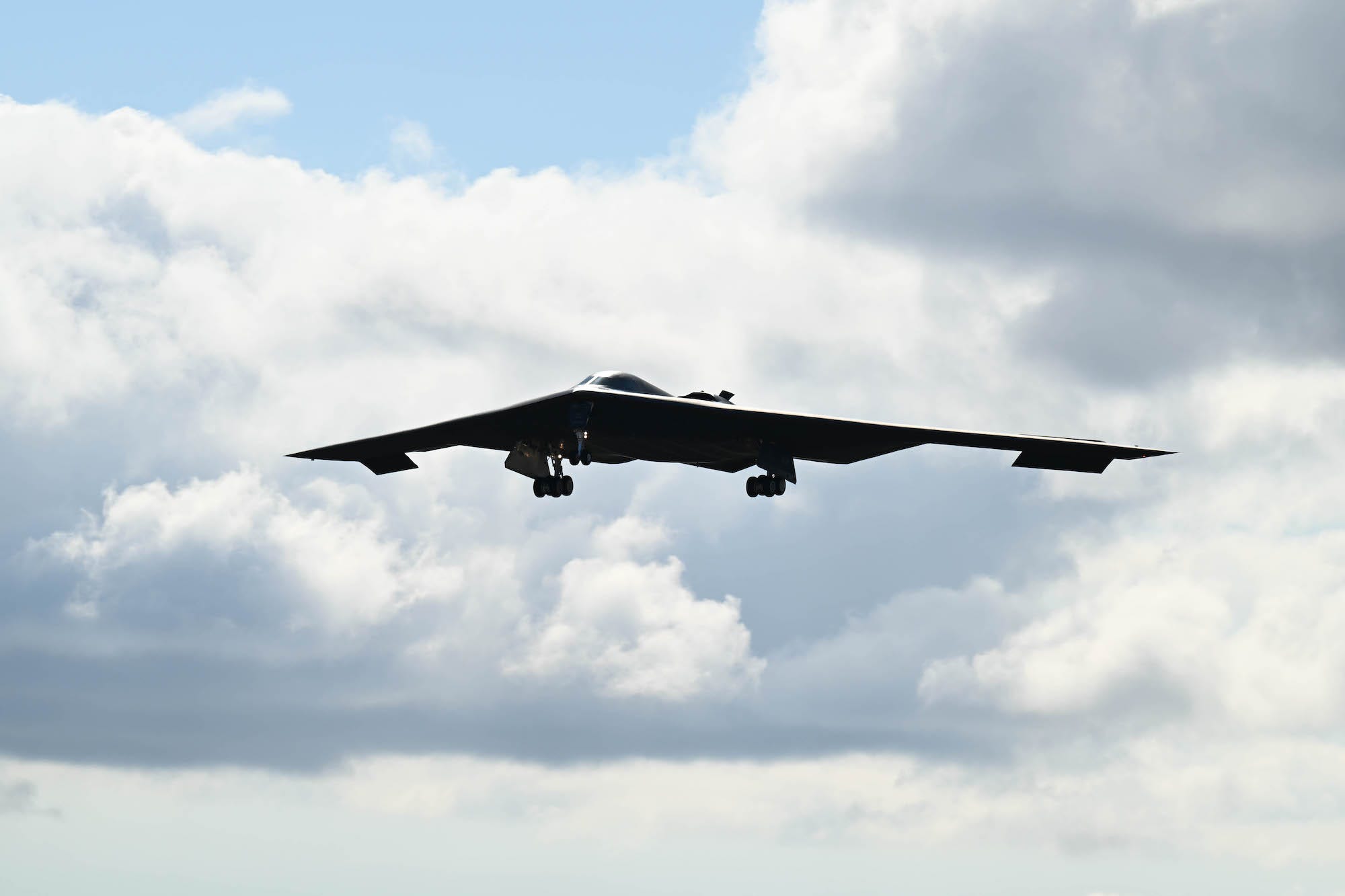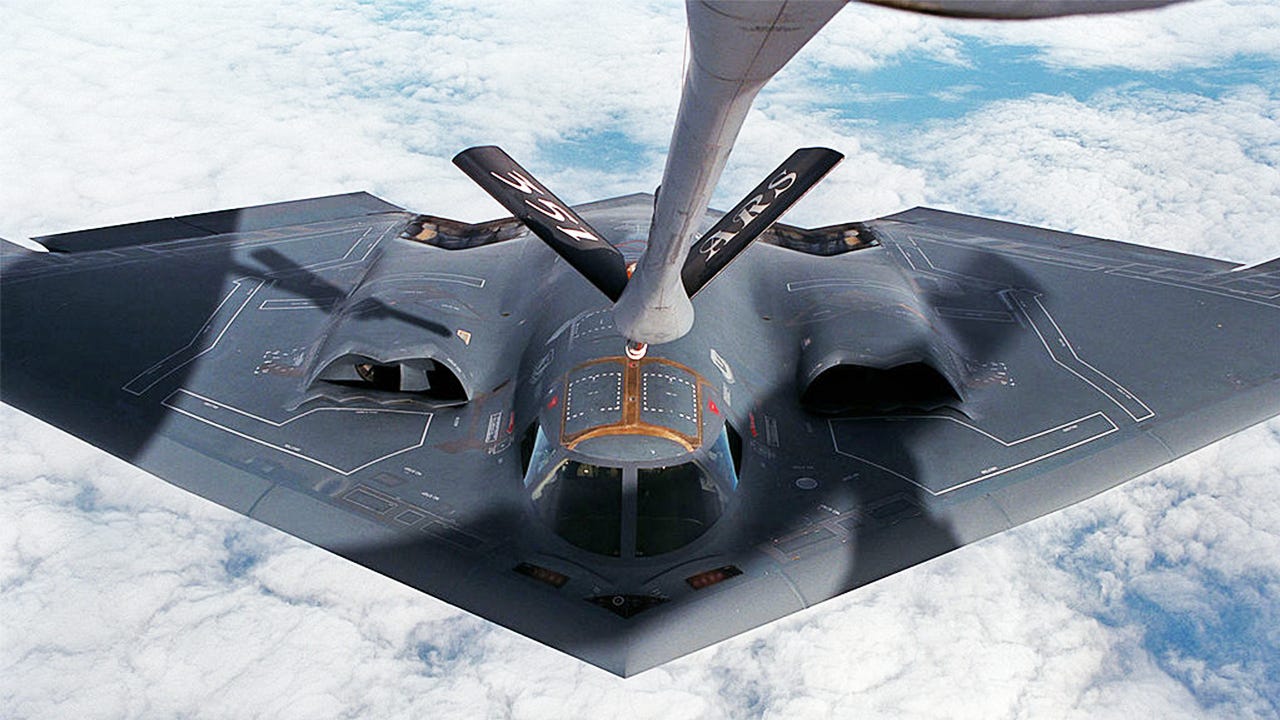
US Air Force/Tech. Sgt. Heather Salazar
The bomber pilots who flew over Iranian airspace or whose aircraft served as decoys during this past weekend’s Operation Midnight Hammer strikes on Iran’s nuclear program didn’t pull this complex mission off on the fly.
It was a highly secretive and challenging mission that would have depended heavily on extensive planning and training. That the B-2s involved, per the Pentagon’s account, dropped massive 15-ton bunker-busters one after another down an exhaust shaft at the Fordow nuclear site speaks to the precision required.
Business Insider talked to retired US Air Force B-2 pilots about what it takes to prepare for difficult missions where stress and fatigue can easily take their toll on the bomber crews.
Retired Air Force Colonel Brian “Jethro” Neal was one of two pilots to fly the longest-ever B-2 flight in 2001, just weeks after the 9/11 attacks. He and fellow pilot Melvin Deaile clocked in a 44-hour flight complete with over half a dozen aerial refuelings and a last-minute change of plans that sent them to drop more bombs.
How do pilots and air support personnel prepare for such arduous missions? Neal said the key is constant practice and having a clear plan for when things go south.
“No plan survives first contact with the enemy,” Neal told BI, repeating a common phrase among US service members rooted in the writings of a 19th-century Prussian field marshal. It refers to the expectation of chaos with combat and the need to be ready when that moment comes.
“So we have plans, we have back-ups to the plans, the plan B, and plan C,” the former bomber pilot said.
It takes a village
His entire unit sprang into action upon learning B-2s would be deployed to fly bombing runs into Afghanistan. That meant groups of civilian government workers, pilots, aircraft maintainers, and airfield managers quickly gathering in planning groups and sharing intelligence to start deciding which targets would be struck and what it would take to achieve success.

509th Bomb Wing
Northrop Grumman’s B-2 Spirit bomber is a sophisticated $2 billion plane built to slip past enemy air defenses undetected and drop either conventional or nuclear payloads on an enemy. The aircraft is built to deliver tremendous devastation, and it takes a village to get just one of these aircraft in the air, Neal said.
A bomber unit’s mission planning process is painstakingly detailed and involves walking through numerous scenarios, identifying pitfalls or tricky enemy defenses to work around, and incorporating key intelligence assessments flowing from multiple avenues to pinpoint what the plan and contingencies should look like.
While top brass and pilots are deep in staff planning, aircraft maintainers are getting planes ready and verifying with planners the right amount of fuel a bomber should carry and how much air should be in the tires. That corresponds directly with the payload size, which is mainly about the weight of the munitions on board.
Meanwhile, the air control tower is working to make sure the stage is set for military aircraft take-offs and landings. They are “coordinating and orchestrating traffic in the air to make sure they’re going the right way at the right time,” Neal said.
Neal recalled the munitions specialists who regularly inspected scores of Joint Direct Attack Munitions, unguided bombs fitted with a GPS-guidance kit. A B-2 carries anywhere between 16 to 80 of these weapons, depending on the munition’s weight.
Then there’s the aircrew flight equipment team, the airmen who make sure that pilots have the right gear for the trip — different gloves depending on the season and environment pilots are heading to, helmets, oxygen systems, survival vests, and even the occasional sleeping cot, which Neal and his co-pilot used for their two-day journey.

USAF/Handout/Getty Images
The same crew will also oversee preparations for worst-case scenarios, like making sure parachutes are ready to be used if needed, or that 9mm pistols are loaded and ready for the pilots to take, in case they are downed in enemy territory, a real possibility against adversaries with sophisticated surface-to-air missile systems.
Battling fatigue
Without Netflix or books readily available to pass the time, Neal said that he and his partner used some of their lengthy flight time to review rules of engagement. The team was briefed before departure, but the fast-moving mission left little time for rehearsals, leaving the two to make the most of in-flight downtime.
A colleague had recommended the men pack baby wipes to help freshen up as they approached their target, an attempt to help their brains lock in amid flight fatigue.
“That was just another human touchpoint to it of trying to stay in the game,” Neal said. “Human factors” like sleep, fatigue, and morale can all affect wartime performance.
“You get to the point where it’s the most important part of the mission. And the frail human body is not designed to perform at its highest level under those conditions,” he shared. After a tense 20 hours of flying with little sleep, the pair was “just trying to do whatever we could to stay at the top of our game.”
This isn’t unfamiliar, though. B-2 pilots train for the exhaustion that comes with excruciatingly long flights.
“It’s part of your mission qualification to get certified to do combat missions in the B-2, to understand how to manage your time, whether that’s a long duration sortie” or a simulator, Neal’s partner Deaile explained. The pair even did 24-hour-long simulations to practice enduring such fatigue, trading off one pilot sleeping while the other piloted the simulator.
Bomber pilots train for a wide range of scenarios and situations. Ideally, everything a pilot does in combat — whether it’s special in-flight maneuvers like aerial refuels or dropping bombs — is something the pilot has already done dozens of times, Neal said. “I want to make sure that I’ve been out there on the dance floor doing that coordination on a regular basis so that it’s second nature.”
The post Behind the scenes of a B-2 bomber strike: How crews prep for hard missions like ‘Midnight Hammer’ appeared first on Business Insider.




